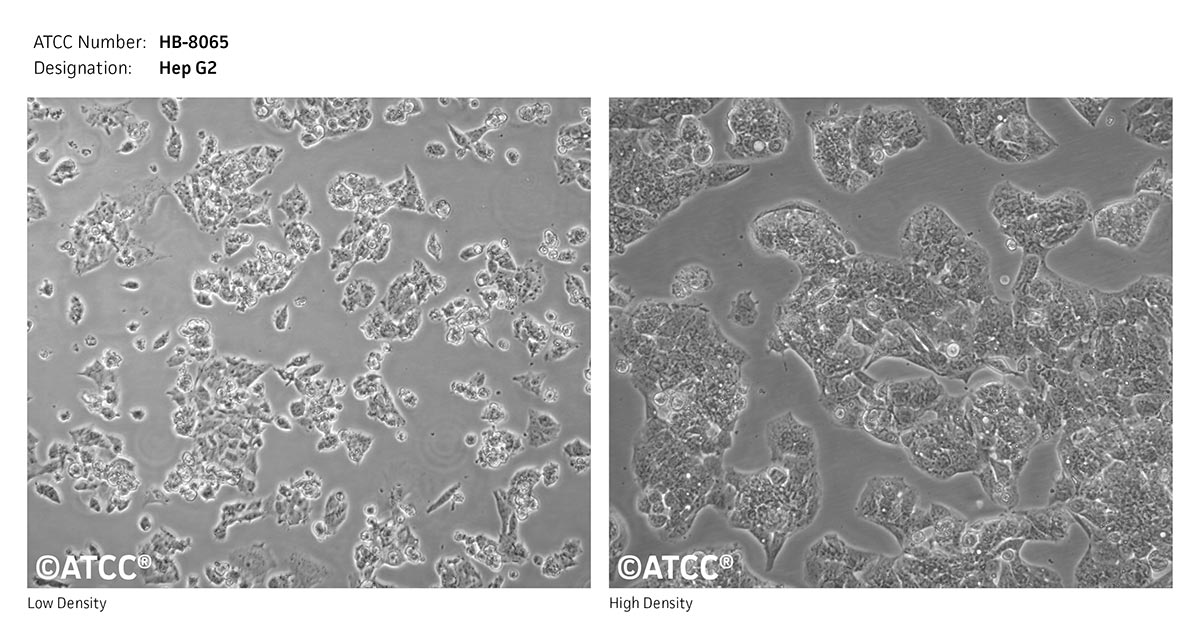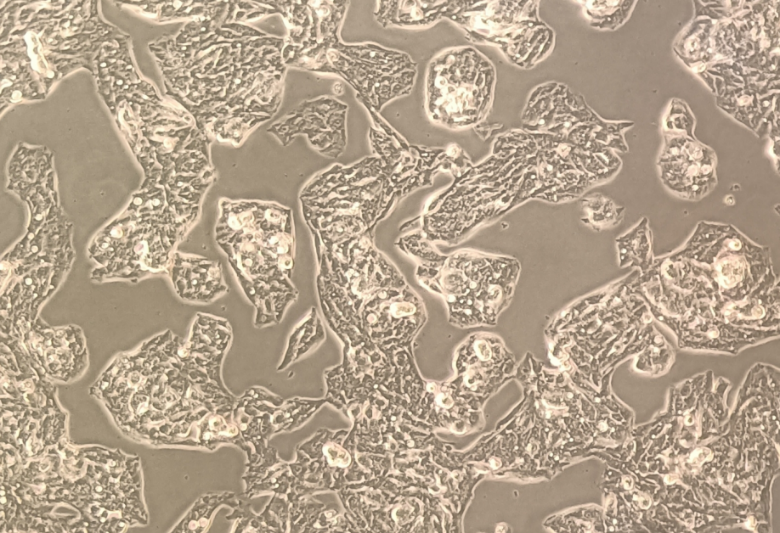- Cart 0
- English
HepG2 Cell Culture Guide
January 03, 2025
Clicks:2052
HepG2 cells are derived from the hepatocellular carcinoma tissue of a 15-year-old Caucasian individual; they secrete a variety of plasma proteins: albumin, α2-macroglobulin, fibrinogen, transferrin, etc.; the modal chromosome number is 55; these cells are non-tumorigenic in immunocompromised mice; they serve as a suitable host for transfection; they express markers including the insulin receptor and the insulin-like growth factor II (IGF II) receptor. They exhibit an epithelial-like morphology; they are adherent, with a passage ratio of 1:4 - 1:6; the culture medium consists of MEM + 10% FBS.
|
Name |
HepG2 (Human Hepatocellular Carcinoma Cells) |
|
Morphology |
Epithelial-like |
|
Growth Characteristics |
Adherent; Passage Ratio 1:4 - 1:6 |
|
Culture Medium |
MEM (abs9503) + 10% FBS (abs972) + 1% PS (abs9244) |

Figure 1 HepG2 Human Hepatocellular Carcinoma Cells
Firstly, we discuss how to determine good growth of HepG2 cells? Compared to other cells, HepG2 cells appear relatively less aesthetically pleasing. What are the morphological characteristics of well-grown cells? Let's look at a comparison (Figures 3 and 4).

| Poor Condition of HepG2 Cells | Good Condition of HepG2 Cells |
Next, we discuss the digestion issues of HepG2 cells. During in vitro culture, these cells tend to form clumps in an island pattern (as shown in Figure 4), and if they grow too densely, mild digestion can cause them to come off in sheets, which can easily form clumps.

Figure 4 HepG2 cells forming clumps and proliferating in an island pattern
How can HepG2 cells be digested into single cells during passage?
There are two solutions:
※ When the confluence reaches 80%, passage can be performed; overgrowth can lead to sheet-like detachment;
※ First, digest with trypsin for about 3 minutes, then terminate the digestion. Use a pipette to aspirate the cell suspension, press the tip gently against the bottom of the culture flask, and quickly expel the cell suspension (this can be repeated once) to effectively reduce cell clumping.
HepG2 is one of the most commonly used hepatocellular carcinoma cell lines, primarily used for liver research.
Hepatitis Virus Research: HepG2 is a commonly used model for studying HBV and HCV cell lines. CRISPR/Cas9 technology is utilized to create HBV-infected HepG2 cell models with gene knockouts, offering new insights into the cure for hepatitis B.
In Vitro Hepatocellular Carcinoma (HCC) Model: The p53 tumor suppressor gene in HepG2 cells is not mutated, making it suitable for studying the close relationship between p53 and HCC, as well as the pathogenesis, diagnosis, and prevention of HCC.
Drug Research: The liver is the primary organ for drug metabolism and detoxification in the human body. HepG2 cells closely resemble human liver tissue in both morphology and function, making them commonly used in drug metabolism and hepatotoxicity research.
This concludes our discussion for this session. What type of cell culture strategy would you like to learn about in the next session? Feel free to leave comments. If you have any cell culture questions, you are welcome to join our WeChat group by scanning the code.
Note: The images are sourced from the internet and customers, for educational purposes only.
Absin provides antibodies, proteins, ELISA kits, cell culture, detection kits, and other research reagents. If you have any product needs, please contact us.
|
Absin Bioscience Inc. |
 Follow us on Facebook: Absin Bio Follow us on Facebook: Absin Bio |
